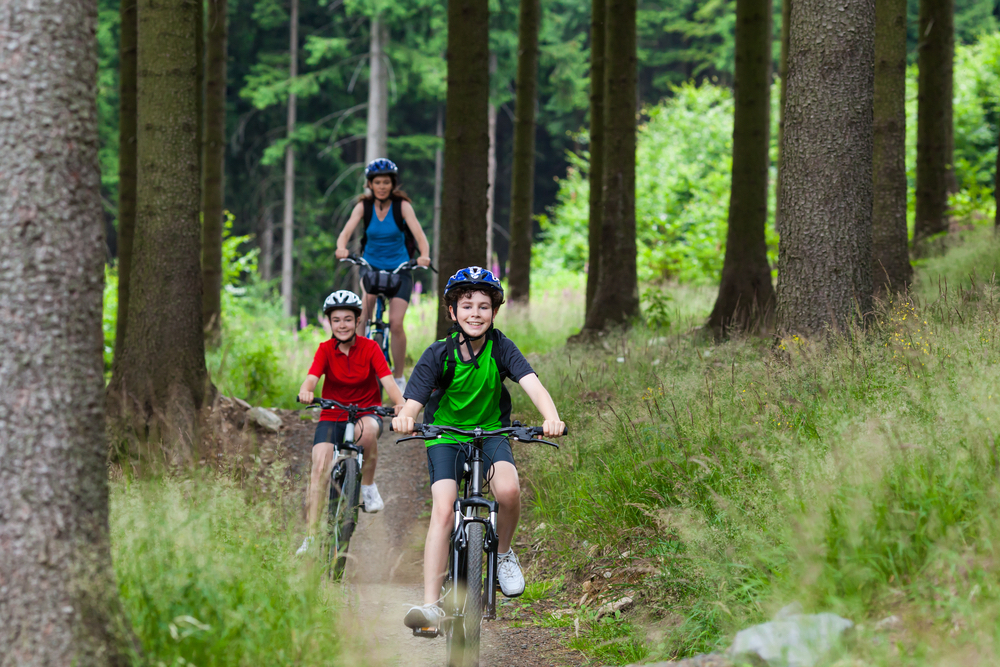5 Health Benefits of Cycling for the Whole Family

As the weather warms, and spring turns to full bloom, more cyclists return to the roads and the River Trail. If this form of exercise is not already in your rotation, now is a great time to start.
In addition to serving as an activity you can take advantage of solo – providing time to work through the day’s stress as you enjoy being outdoors – cycling is also a great social activity with a group of peers or family activity with kids of all ages.
Here are just a few of the health benefits.
1. Cycling is great for toning muscle and burning fat.
Because cycling is an activity that involves a great deal of pedaling, it may be assumed that it helps only in toning the muscles of the calf and thighs. But in fact, it is an overall physical workout and involves the movement of almost every part of the body. In children, a strong improvement in bone and muscle health has been noticed after regular cycling sessions.
“The resistance element of cycling means that it doesn’t just burn fat: it also builds muscle – particularly around the gluteals, hamstrings, quads and calves,” explains Dr. J. Kirk Grynwald of OrthoArkansas, an avid cyclist who competes in mountain biking and cyclocross.
2. It gives you more energy.
Cycling helps increase the body’s stamina and gives a boost to endurance. What parent doesn’t need that? Pushing pedals releases endorphins, the body’s feel-good chemicals. The aerobic and anaerobic benefits depend on the intensity of the exercise.
3. It may help with pain management and neurological disease.
Cycling is considered as a “releasing” exercise. Releasing exercises play a very important role in alleviating physiological and psychological issues like stress, tension and pain. Cycling is a widely accepted pain-reduction strategy that is often implemented on children, but is just as useful for adults.
“The rhythmic motion and stimulation of multiple senses has been shown to be helpful for the nervous system, as seen in Parkinson’s disease,” Dr. Grynwald notes.
4. It may prevent arthritis.
Cycling has been noted to be one of the best exercises for both preventing and reducing arthritis. Outdoor cycling and indoor static cycling are both equally beneficial in this regard.
“You can help to prevent and delay the onset of certain types of arthritis,” says Dr. Grynwald. “If you have healthy joints right now, do all you can now to maintain mobility and function and avoid the pain and disability associated with arthritis.”
5. It is gentler on your body than running.
“Cycling is a low impact form of exercise in contrast to running. Joint injury rates are therefore lower. Cycling, especially with a proper bike fit, puts you at less risk for overuse injury,” says Dr. Grynwald.
For children, it helps develop and strengthen the muscles around the knees without impact.
